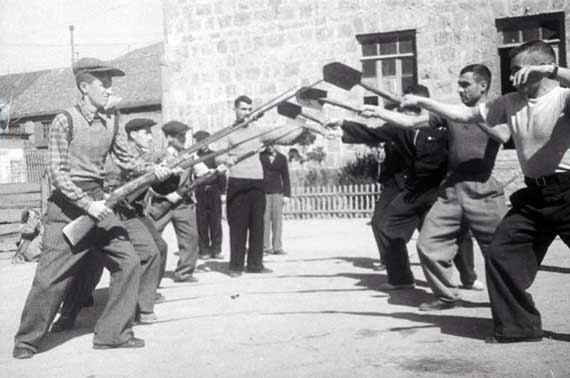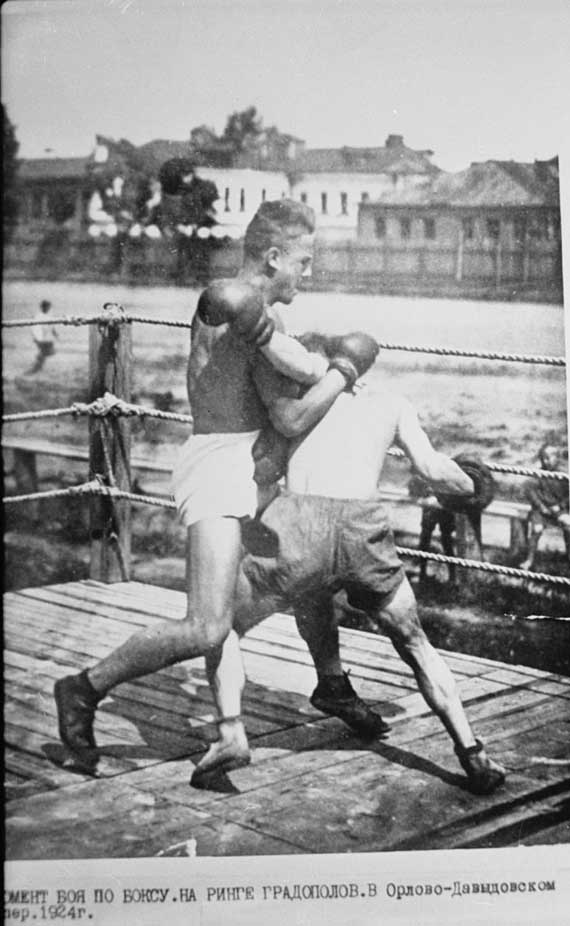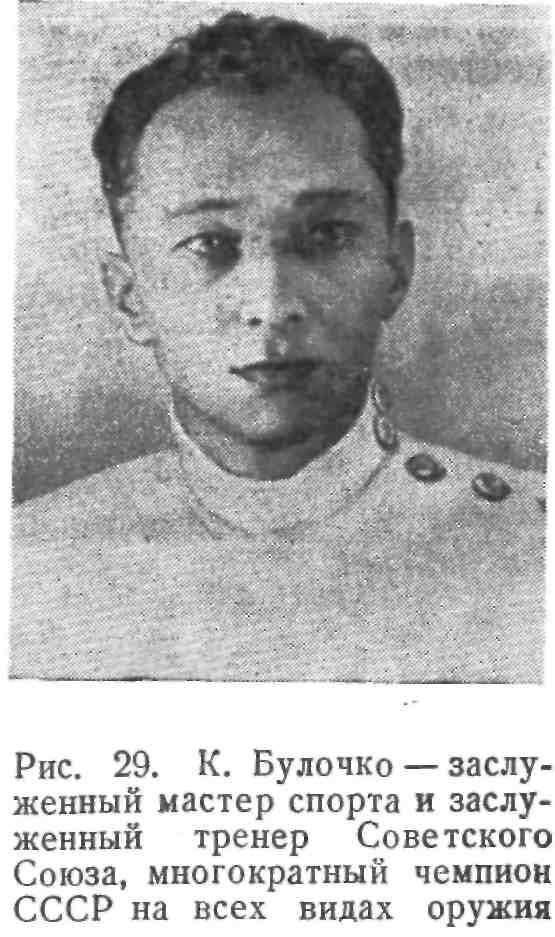This article is in Russian
Hand-to-Hand Fight. The History of Hand-to-Hand Fighting in Russia and Ukraine. Part 2.
The training system of hand-to-hand fighting and special tactical fighting skills in tsarist Russia lasted from 1910 to 1917. All the developments and methodologies of this period started to be applied in the state security apparatus of the newly formed government. Firstly, in the Russian Soviet Federative Socialist Republic (RSFSR), and later in the USSR: the All-Russian Extraordinary Commission (Cheka), the State Political Directorate (GPU) and the Joint State Political Directorate (OGPU), the People’s Commissariat of Internal Affairs (NKVD) and the People’s Commissariat for State Security (NKGB), the Ministry of State Security (MGB).

In this period, hand-to-hand fighting developed mainly in applied vector among law enforcement officials and military personnel of special units.
The beginning of the 20th century was a turbulent, unstable, and military time . It was characterised by increased interest of all the strata of society in the military art, including in methods and techniques of weaponless fight with the enemy. Formerly, in pre-revolutionary times, instructors of various self-defense styles appeared in big cities. They used a variety of European and Eastern martial arts techniques. Many of them were rather poseurs than real trainers. During the revolution, the interest in hand-to-hand fighting grew even more.
. It was characterised by increased interest of all the strata of society in the military art, including in methods and techniques of weaponless fight with the enemy. Formerly, in pre-revolutionary times, instructors of various self-defense styles appeared in big cities. They used a variety of European and Eastern martial arts techniques. Many of them were rather poseurs than real trainers. During the revolution, the interest in hand-to-hand fighting grew even more.

The explosive rise of hand-to-hand fighting in the Soviet times ensured the introduction of the system of Universal Military Training (VseVobuch) . More than 5 million people of both conscription and pre-conscription age did the training over the years of the civil war alone . Along with saber and carbine fencing (as bayonet fighting was called), a course of elementary techniques from English boxing and French wrestling was introduced. Many acclaimed coaches and ideologists of hand-to-hand fighting emerged from ordinary VseVobuch instructors and senior instructional staff, who were taking part in the development of teaching methods.
. More than 5 million people of both conscription and pre-conscription age did the training over the years of the civil war alone . Along with saber and carbine fencing (as bayonet fighting was called), a course of elementary techniques from English boxing and French wrestling was introduced. Many acclaimed coaches and ideologists of hand-to-hand fighting emerged from ordinary VseVobuch instructors and senior instructional staff, who were taking part in the development of teaching methods.

 . Spiridonov (1988 – 1943), Vasiliy S. Oshchepkov (1892 – 1937), Nil N. Oznobishin (1892 – 1942), Vladislav P. Volkov, Roman A. Shkolnikov, Anatoliy A. Kharlampiyev, Konstantin V. Gradopolov. All of them contributed greatly to the formation of hand-to-hand fighting as researchers and conservators of various techniques, as well as practicing instructors. For the first time in Slavic history, these people tried to classify and systematise self-defense techniques. Many of the terms introduced by these instructors are used presently in contemporary martial arts, above all in sambo.
. Spiridonov (1988 – 1943), Vasiliy S. Oshchepkov (1892 – 1937), Nil N. Oznobishin (1892 – 1942), Vladislav P. Volkov, Roman A. Shkolnikov, Anatoliy A. Kharlampiyev, Konstantin V. Gradopolov. All of them contributed greatly to the formation of hand-to-hand fighting as researchers and conservators of various techniques, as well as practicing instructors. For the first time in Slavic history, these people tried to classify and systematise self-defense techniques. Many of the terms introduced by these instructors are used presently in contemporary martial arts, above all in sambo.
In the post-revolutionary period of the Soviet Union, professors of various institutes of physical education took part in the systematization of hand-to-hand fight. These were Nikolai M. Galkovskiy and Konstantin T. Bulochko in the first place. The academic department of Fencing and Combat of State Central Order of Lenin Institute of Physical Education (SCOLIPE) was established in Leningrad (presently – Saint Petersburg). It was meant for academic systematization of the principles of hand-to-hand fighting teaching (formerly – wrestling) and cold weapon fighting skills (fencing).

 . Bulochko, Fencing and Hand-to-Hand Fighting, was published for the students of the Institute of Physical Education (IFK). This book covered all aspects of fencing and hand-to-hand fighting in the fullest possible way. For decades, it became a reference book for students and instructors of hand-to-hand fighting.
. Bulochko, Fencing and Hand-to-Hand Fighting, was published for the students of the Institute of Physical Education (IFK). This book covered all aspects of fencing and hand-to-hand fighting in the fullest possible way. For decades, it became a reference book for students and instructors of hand-to-hand fighting.
By 1941, fencing and hand-to-hand fighting reached their highest stage. In that time, fencing and hand-to-hand fighting classes became as popular as gymnastics and athletics in 30 main sports clubs of the USSR.

In the military ambit, the hand-to-hand fighting of 1917–1941 is inextricably connected with the skill of using melee weapons – fencing . Mobile civil war, which replaced positional First World War, was characterized by massive use of cavalry and led to replacing the prevalent bayonet in close combat by saber and broadsword. Hand-to-hand fighting at that time was primarily a fight with service melee weapons: sabers, broadswords, and bayonets. Weaponless self-defense techniques were considered either in the last place as unpromising, or when paired with cold weapons.
. Mobile civil war, which replaced positional First World War, was characterized by massive use of cavalry and led to replacing the prevalent bayonet in close combat by saber and broadsword. Hand-to-hand fighting at that time was primarily a fight with service melee weapons: sabers, broadswords, and bayonets. Weaponless self-defense techniques were considered either in the last place as unpromising, or when paired with cold weapons.
However, some shared another belief. Hand-to-hand fighting history is tightly connected with the names of Nikolai M. Galkovskiy and Roman Shkolnikov, the natives of Ukraine. Both of them were the closest assistants and students of Vasiliy S. Oshchepkov. In 1937 Nikolai Galkovsky submitted his piece of writing to the Physical Training and Sports Inspectorate of the Workers’ and Peasants’ Red Army (RKKA). In it, he set forth the methodology for teaching hand-to-hand fighting techniques between an unarmed and an armed person and the technique for performing these movements. Each technique had the most complete description and was well illustrated with photographs. With significant reductions and in a very condensed form, in 1938 this material was published as a separate section in the NPRB-38 (Manual on the Preparation for Hand-to-Hand Fighting of the RKKA). The manual was provided for the active units of the Red Army.
Roman Shkolnikov was the pioneer in popularizing SAMBO wrestling in Ukraine. Not only was he a student of Oshchepkov, but he also invented and introduced sports equipment into the everyday life of athletes. For instance, a sambovka – a special jacket (“sports jacket of a special cut”), as well as lightweight shoes – wrestling shoes with protective pads on the ankle and the base of the thumb. This set of sportswear remains the hallmark of sambo wrestling.

 . Volkov first combined the elements of both systems within the framework of a single study course described in his textbook for NKVD schools “Weaponless Self-Defense Course of Sambo”. Volkov was trained both by Spiridonov (one of the most famous practitioners of hand-to-hand fighting in the Ministry of Internal Affairs (MVD) system) and by Oshchepkov.
. Volkov first combined the elements of both systems within the framework of a single study course described in his textbook for NKVD schools “Weaponless Self-Defense Course of Sambo”. Volkov was trained both by Spiridonov (one of the most famous practitioners of hand-to-hand fighting in the Ministry of Internal Affairs (MVD) system) and by Oshchepkov.
By the beginning of the 40s, hand-to-hand fighting as a constituent element was already included in the training complex of various systems. They were ranging from the GTO for the population (“Ready for Labor and Defense” physical culture training programme) to special disciplines for soldiers of the Red Army, NKVD, and the police. These were courses of overcoming obstacles, fencing (bayonet and saber fighting), wrestling, and striking techniques.
Hand-to-hand fighting received the greatest impetus in its development and massive use during the Second World War. We will talk about it in the following parts…
Read more:
Part 1: Hand-To-Hand Combat In Tsarist Russia
При копировании материала просим ссылаться на источник https://nipponkempo.com.ua/article/hand-to-hand-combat-in-the-first-years-of-the-soviet-regime/. Правила публикации здесь. В противном случае, мы обязательно выявим плагиат и будем обращаться в DMCA Google.



